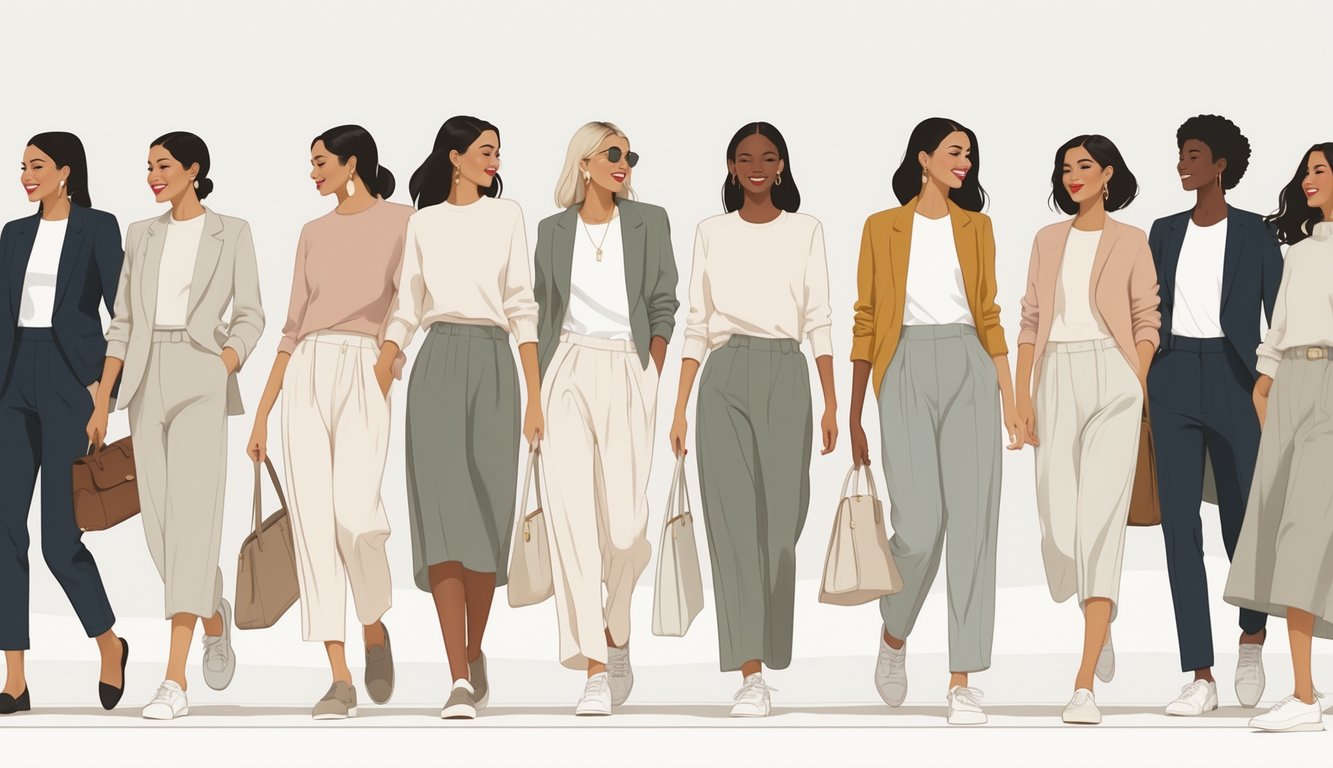
Emphasizing Comfort and Versatility for Everyday Life
I’m still searching for the perfect “wear it anywhere, survive anything” cut. Usually, I’m stuck fidgeting with waistbands or wondering if linen shorts really wrinkle less in humidity (spoiler: they don’t). Certain shapes make life easier, but let’s be real, there’s never a miracle fit for everyone.
Travel-Friendly Cuts
Planes. Trains. Rental cars that smell like melted crayons and existential dread. If you’ve never spent six hours shifting around in pants with seams that feel like medieval torture, I envy you. I’m just out here collecting stretch waistbands, cropped hems that almost—almost—miss puddles, and those so-called “articulated knee darts” that sound fancier than they look. Honestly, these details? It’s like closet tech for people who hate ironing.
Stylists keep repeating this: “Tailored joggers, not classic trousers, even for work trips.” I don’t know, maybe they’re right, maybe I just hate the word “jogger.” Designers are all, “Our stretch poplin won’t bag out,” and there’s some Forbes founder who swears her tech twill pants stay crisp from gate to meeting. Sure, and my suitcase never explodes, right? Forbes reference. Cargo pockets: still not flattering, but at least my phone stops skidding across airport tiles. Oh, and the “wear as sleepwear” idea? Did it once. Zero stars, would not repeat.
Seasonal Adaptability
Weather’s a troll. Last week I wore my summer basics with a knit blazer and basically melted before I hit the crosswalk. Fabric matters way more than color—cotton-linen blends, modal jersey, that stuff lets air in, but when the AC’s set to “Arctic,” you need layers. Brands brag about “breathable” everything, but half the time it just means “you’ll sweat a little less.”
Everyone loves to pitch button-up tanks and drawstring shorts like they’re life hacks, but I spill coffee and life happens, so light colors and loose fits? Good luck. Tried one of those “UV protection” oversized tees after reading a blog rec (here’s the list). Honestly, sunscreen is just easier if you remember it exists. Fitted rib tanks, wide-leg drawstring pants—those survive my laundry routine, not because they’re magical, just because they don’t die after three cycles. Everyone’s obsessed with “versatility” like it’s a personality trait, but really, it just means “clothes that don’t disintegrate before September.”
Sustainable Choices: Responsible Fashion for Daily Wear
I keep pretending my pile of stretched-out tees and polyester joggers isn’t growing. It is. It’s embarrassing. Buying seven of the same shirt, knowing six will pill after a month—why? I keep circling back to two things: what’s in my clothes, and how often I actually wear the stuff I like. Somewhere, someone’s spinning sustainable fashion advice that isn’t just “buy less, live more”—and for once, some of it actually makes sense.
Environmentally Conscious Materials
Ever buy a shirt, check the tag, and realize you’re wearing recycled fishing nets? That’s apparently a win. Less landfill guilt, more “I’m helping the planet” delusion. Organic cotton gets all the hype, but honestly, it’s just regular cotton that doesn’t destroy the planet quite as fast (see: 2017 Textile Exchange report). My linen shirt from a flea market? Still alive, still breathable, still gets shoved in gym bags and survives.
Then there’s bamboo viscose (but only if it’s FSC-certified, which is rare—my friend Claire, the materials scientist, won’t shut up about greenwashing), and TENCEL lyocell, which Scientific American says is better because of “closed-loop production,” whatever that means in real life. Nobody tells you that “vegan leather” is often just PVC plastic in disguise, so if you find mushroom-based Mylo or cork, that’s actually better. I literally text people: “Check the tag or you’ll end up with a landfill special.”
Longevity and Repeat Wear
Nobody admits it, but most of my closet dies before the season ends unless it’s built like a tank. Mass-market stuff pills, sags, or just loses all shape. It’s obvious, but I’ll say it: buy sharper cuts, real fabrics, stuff that doesn’t date overnight. My favorite blazer? Deadstock wool, decade old, cost too much, never regretted it. Dry cleaner hates me, but it still fits.
Insiders always say, “Cost per wear matters more than price tag.” I’ve tracked it—$15 tee dead in three weeks, $100 button-down still going years later. Washing isn’t a death sentence if you skip the dryer and use a garment bag—NYC tailor tip. If I ever do a closet overhaul, my only rule is: if it can’t take fifty actual wears, it’s just future trash. Less impulse, more function. Sustainable habits are less annoying when they save space and cash, as this guide points out.
Mix, Match, and Modernize: Building Outfits with People-Approved Cuts
Stepped on another pair of wide-leg trousers and realized: half my closet isn’t cut for real life. Trends? Whatever. Most stylists say: stick with basics, layer up, and if you’re desperate, add a wild shoe before the caffeine kicks in.
Smart Layering Techniques
How many times have I grabbed a cropped jacket thinking, “This is it,” only to have the sleeves strangle me by noon? Hack: tailored vest + straight jeans, not because it’s cool, just because it moves. Style Fundamentals says pros start with base layers—fitted crewnecks, draped knits, polished tees.
Suddenly, I notice: structured shoulder seams look sharper under coats, slim cardigans don’t add Michelin Man bulk. How do subway women always look ready for job interviews and thunderstorms at the same time? Viscose-blend base layers, always tucked, navy or white, weirdly loyal to medium inseams. Turtlenecks under everything—one D.C. stylist called them “cheat codes for looking polished on three-day commutes.” Nobody ever layers two oversized pieces. Law of physics or fashion? No clue.



